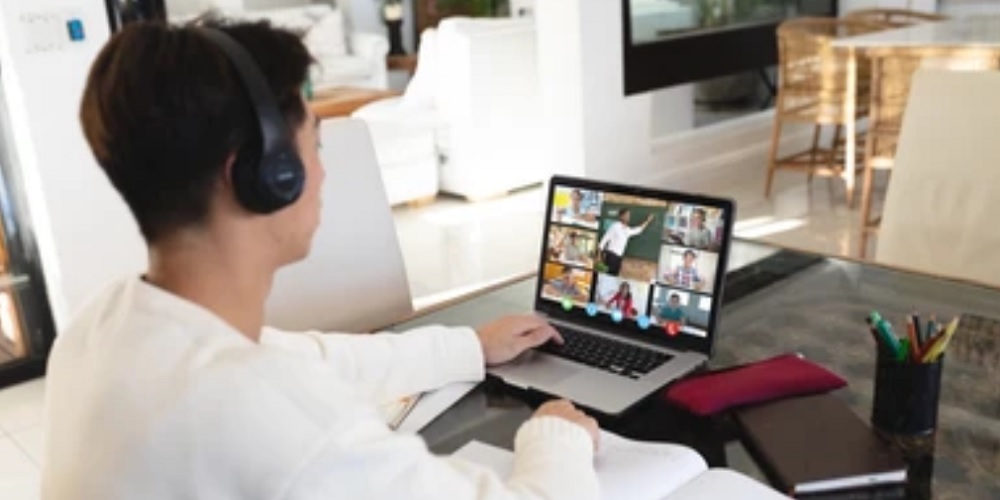How to Increase Learner Engagement in Online Learning

Video is now the most engaging form of media in the classroom. It fosters an environment for learning and growth, and its ability to support learner recall and retention is nine times more powerful than text-based materials alone.
Unfortunately, video content is not engaging solely upon its creation; it takes time, effort, and continuous improvement to maximize online learner engagement. If your organization is just beginning its foray into educational video content, it's vital to get things right the first time.
Knowing how to leverage video to increase learner engagement in online learning is half the battle. If you understand how organization and management play into video reception, both you and your learners may be better equipped for success. This requires a deeper understanding of video content and its role in online learning.
Factors affecting learner engagement with video
Engagement markers are critical for getting results with your educational content. The more engaged learners are with your videos, the more likely they will stay motivated, absorb information, and achieve all stated learning goals.
Research points to several factors affecting online learner engagement. These include:
- Learning habits. Learners who are not equipped with strong study habits, including time management and organization skills, may have a harder time engaging with online content.
- Lack of technology skills. Many of today’s learners are digital natives, but not all have developed the skills needed to engage with online content. These could include anything from basic computer literacy to specific skills like LMS navigation.
- Unfamiliarity with technology. Accessibility may also be a component of this, particularly with playback options or adaptability features.
Each of these factors must be remedied appropriately to facilitate greater engagement with your digital video content.
How to increase learner engagement in online learning
There are a few key ways to increase your online learners' motivation, interest, and intent for knowledge acquisition.
Here’s how to increase learner engagement in online learning using a five-pronged approach.
1. Manage cognitive load
Cognitive load refers to the amount of information that a learner can absorb at one time. Managing cognitive load effectively in educational videos enables learners to retain information in a more efficient way.
This can be accomplished in several ways. First, use signaling to inform learners about important concepts or information. Next, segment the videos into smaller or more digestible chunks while weeding out extraneous material. Finally, use both audio and video to reinforce a concept, such as a narrated animation or a “Khan Style” tutorial with whiteboards or synchronous graphics.
2. Get organized
More than 60% of teachers feel frustrated trying to find new educational videos. This can even include content created by your organization, particularly if they are housed on inefficient platforms, like Vimeo or YouTube.
Do what you can to create highly organized folders and libraries of video content. You may want to segment them by class, length, or subject matter. With platforms like Warpwire, you can even use metadata and tags to group related concepts.
3. Personalize the material
Learners are statistically more engaged with content that was created just for them—and not just for the MOOC environment. To that end, personalize your videos to specific learners, classes, or environments.
Try implementing a conversational style in the videos, which includes the talent, graphics, and actual script. If possible, increase the speaker’s speed of speech and have them add an element of enthusiasm to their tone. It may be helpful to match modalities with audio and visual elements.
4. Increase speaking speed
Learner engagement increases when the speaker’s talking speed increases. If your on-screen video talent speaks at a slow pace, this may negatively impact engagement.
To combat this, provide learners with video chapters, transcripts, and playback speed control options. This enables them to customize the speech intensity to match their expectations.
5. Reduce video length
After analyzing 6.9 million video-watching sessions on MOOC platforms, researchers found that short educational videos were far more efficient than long ones. You should aim to produce educational videos that are around six minutes long to maintain 100% engagement. Videos between twelve minutes and forty minutes show significantly worse engagement rates, barely topping 20% at max.
When each of these learning practices is paired alongside a vetted video management platform, educators can see great success in their future campaigns. These practices include the services provided by Warpwire, one of the most trusted video management platforms of the twenty-first century.
How Warpwire fosters engagement with educational content
Warpwire is a content management platform designed to enhance, implement, and track online learner engagement factors through video. Partnered with 3,500+ organizations, it supports educators of all fields with the necessary tools to support educational engagement at scale.
Warpwire simplifies the video curation process by improving reach with accessible technologies, including support for captions and playback adaptability. Catering to both pre-recorded and live video formats, its solutions are designed to boost engagement returns through platforms uniquely designed for event management. You can implement engagement trackers of your own through the powerful API or natively track spikes of engagement with a full-service analytics dashboard.
Whether you manage a small-scale digital program or a wide-reaching online university, Warpwire’s unique management software can help you reach your video engagement goals.
Warpwire’s video platform provides analytics to help you track media assets, media libraries, and system-wide usage. Designed to explore engagement, Warpwire’s reports provide deep insight into how your institution interacts with media.
To see how we can help you better leverage your video content, get in touch with us today!
